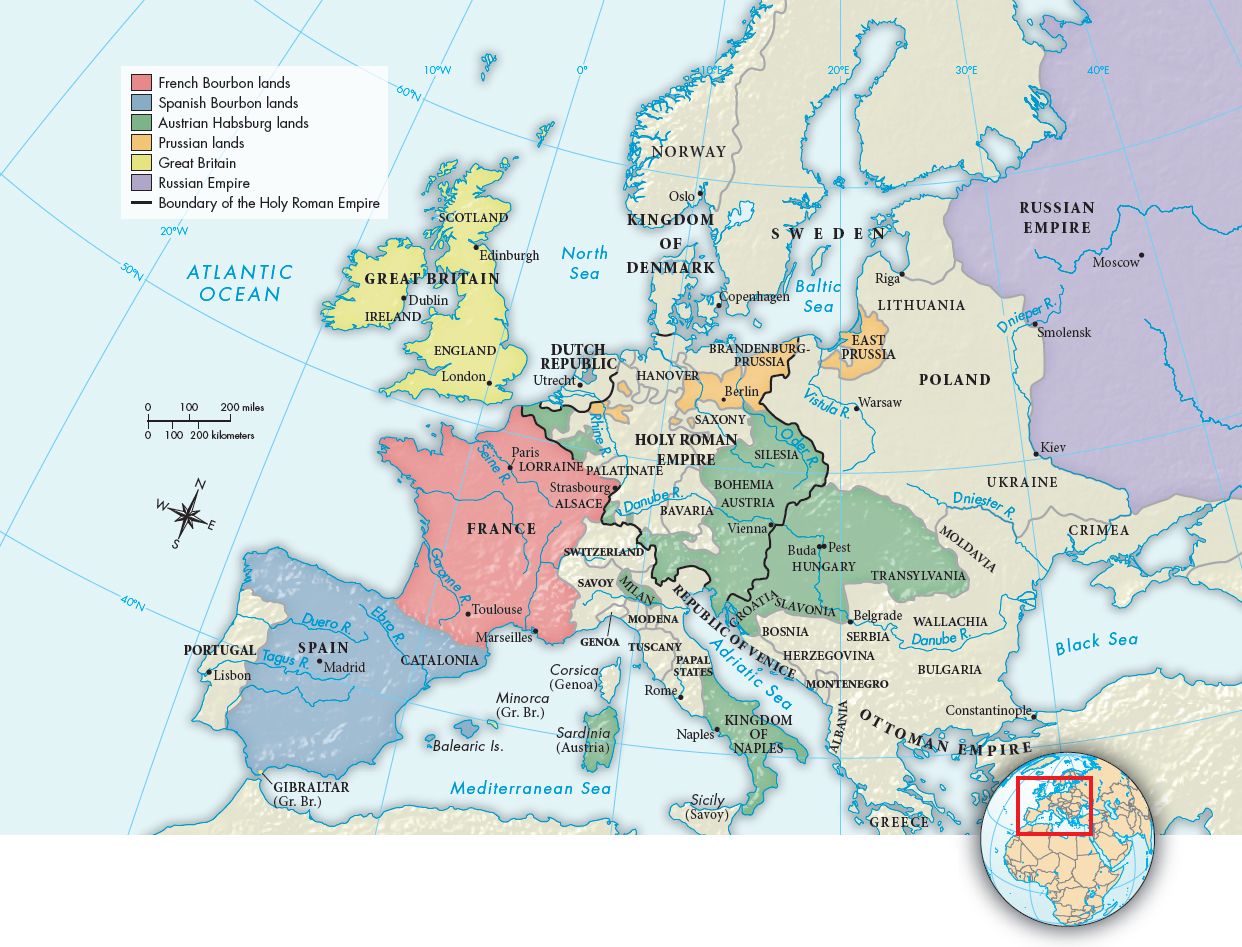Understanding World Societies:
Printed Page 525
Chapter Chronology
Expansion Within Europe
Louis XIV kept France at war for thirty-three of the fifty-four years of his personal rule. Under the leadership of François le Tellier, marquis de Louvois, Louis’s secretary of state for war, France acquired a huge professional army. The French army almost tripled in size. Uniforms and weapons were standardized, and a system of training and promotion was devised. As in so many other matters, Louis’s model was emulated across Europe.
During this long period of warfare, Louis’s goal was to expand France to what he considered its natural borders. His results were mixed. During the 1660s and 1670s, French armies won a number of important victories. The wars of the 1680s and 1690s, however, brought no additional territories and placed unbearable strains on French resources.
Louis’s last war, the War of the Spanish Succession (1701–1713), was endured by a French people suffering high taxes, crop failure, and widespread malnutrition and death. This war was the result of Louis’s unwillingness to abide by a previous agreement to divide Spanish possessions between France and the Holy Roman Emperor upon the death of the childless Spanish king Charles II (r. 1665–1700). In 1701 the English, Dutch, Austrians, and Prussians formed the Grand Alliance against Louis XIV. War dragged on until 1713, when it was ended by the Peace of Utrecht (Map 18.3).

MAP 18.3Europe After the Peace of Utrecht, 1715The series of treaties commonly called the Peace of Utrecht ended the War of the Spanish Succession and redrew the map of Europe. A French Bourbon king succeeded to the Spanish throne. France surrendered the Spanish Netherlands (later Belgium), then in French hands, to Austria and recognized the Hohenzollern rulers of Prussia. Spain ceded Gibraltar to Great Britain, for which it has been a strategic naval station ever since. Spain also granted Britain the asiento, the contract for supplying African slaves to America.> MAPPING THE PAST
ANALYZING THE MAP: Identify the areas on the map that changed hands as a result of the Peace of Utrecht. How did these changes affect the balance of power in Europe?CONNECTIONS: How and why did so many European countries possess scattered or discontiguous territories? What does this suggest about European politics in this period? Does this map suggest potential for future conflict?
The Peace of Utrecht marked the end of French expansion. Thirty-three years of war had given France the rights to all of Alsace and some commercial centers in the north. But at what price? At the time of Louis’s death in 1715, an exhausted France hovered on the brink of bankruptcy.
